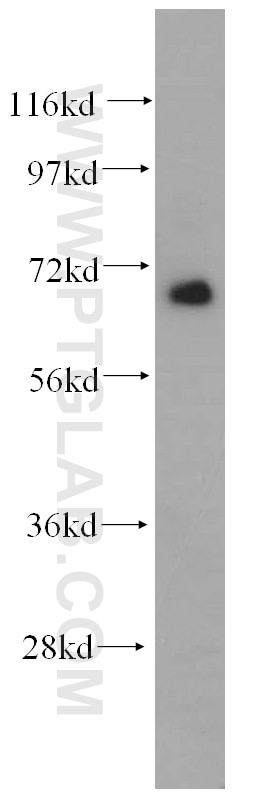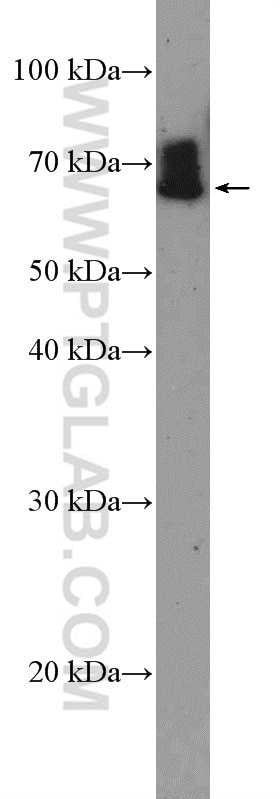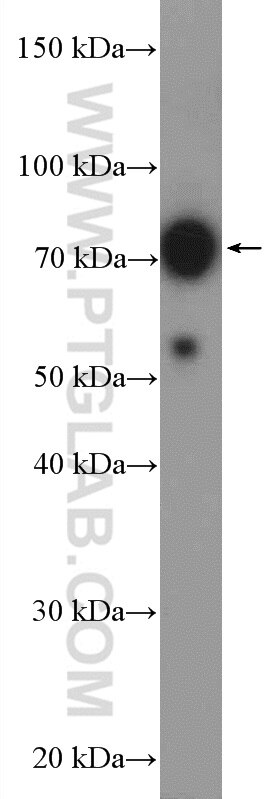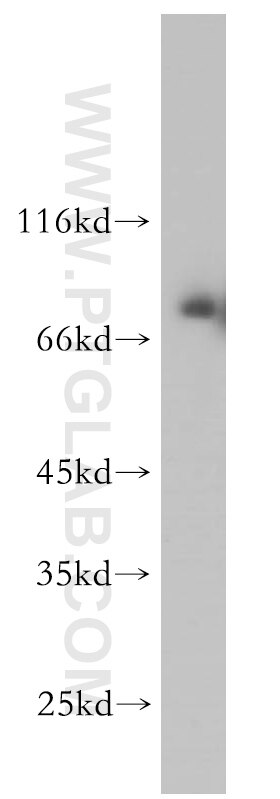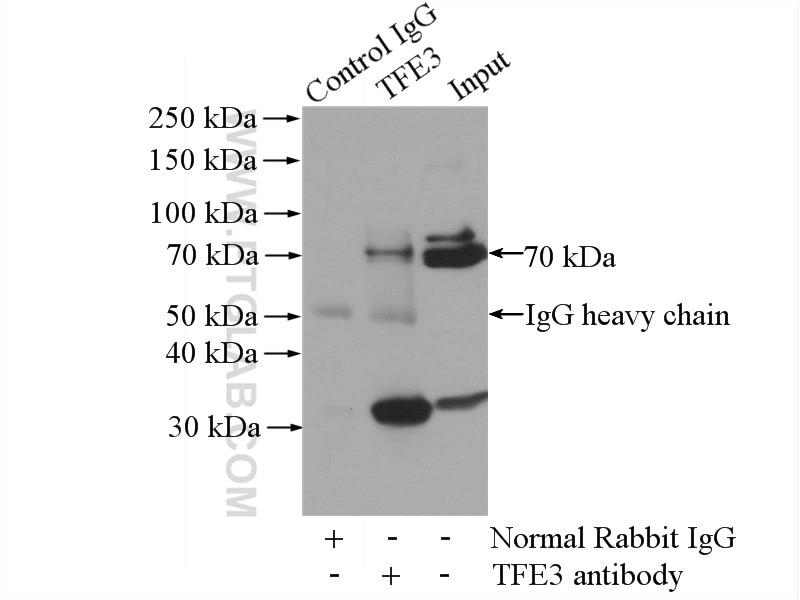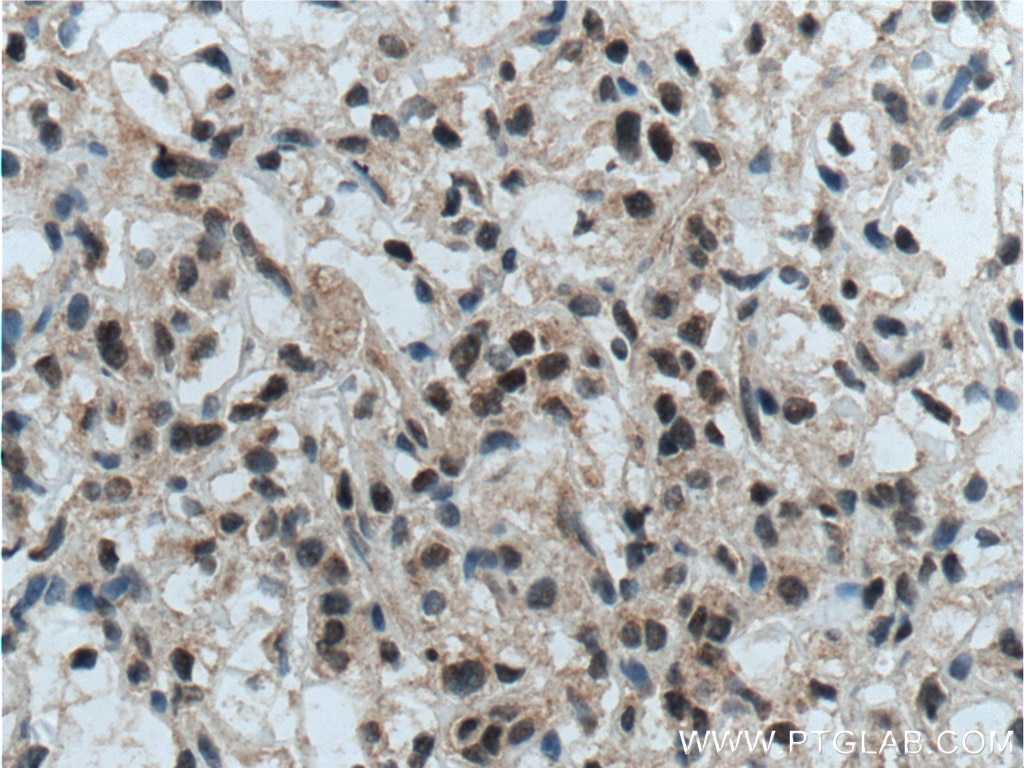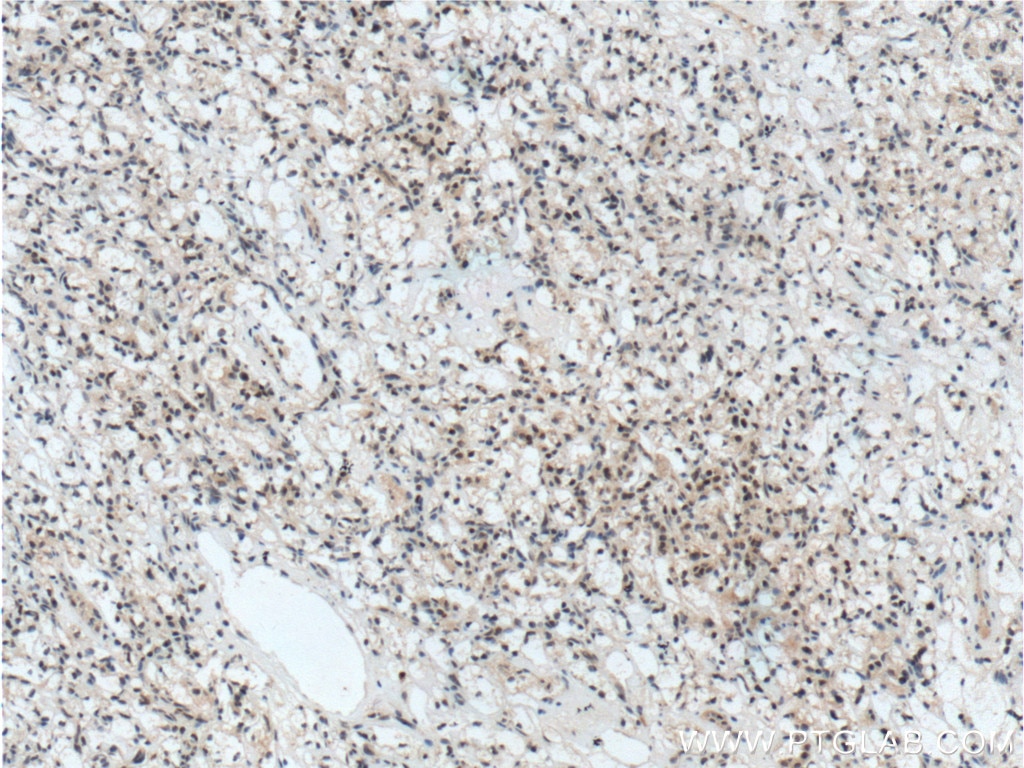- Phare
- Validé par KD/KO
Anticorps Polyclonal de lapin anti-TFE3
TFE3 Polyclonal Antibody for WB, IP, IHC, ELISA
Hôte / Isotype
Lapin / IgG
Réactivité testée
Humain, rat, souris
Applications
WB, IHC, IF, IP, ChIP, ELISA
Conjugaison
Non conjugué
N° de cat : 14480-1-AP
Synonymes
Galerie de données de validation
Applications testées
| Résultats positifs en WB | cellules K-562, tissu cérébral de rat, tissu cérébral humain, tissu splénique de souris |
| Résultats positifs en IP | cellules K-562 |
| Résultats positifs en IHC | tissu de carcinome à cellules rénales humain il est suggéré de démasquer l'antigène avec un tampon de TE buffer pH 9.0; (*) À défaut, 'le démasquage de l'antigène peut être 'effectué avec un tampon citrate pH 6,0. |
Dilution recommandée
| Application | Dilution |
|---|---|
| Western Blot (WB) | WB : 1:500-1:2000 |
| Immunoprécipitation (IP) | IP : 0.5-4.0 ug for 1.0-3.0 mg of total protein lysate |
| Immunohistochimie (IHC) | IHC : 1:50-1:500 |
| It is recommended that this reagent should be titrated in each testing system to obtain optimal results. | |
| Sample-dependent, check data in validation data gallery | |
Applications publiées
| KD/KO | See 4 publications below |
| WB | See 16 publications below |
| IF | See 10 publications below |
| IP | See 2 publications below |
| ChIP | See 4 publications below |
Informations sur le produit
14480-1-AP cible TFE3 dans les applications de WB, IHC, IF, IP, ChIP, ELISA et montre une réactivité avec des échantillons Humain, rat, souris
| Réactivité | Humain, rat, souris |
| Réactivité citée | rat, Humain, souris |
| Hôte / Isotype | Lapin / IgG |
| Clonalité | Polyclonal |
| Type | Anticorps |
| Immunogène | TFE3 Protéine recombinante Ag5863 |
| Nom complet | transcription factor binding to IGHM enhancer 3 |
| Masse moléculaire calculée | 62 kDa |
| Poids moléculaire observé | 70 kDa |
| Numéro d’acquisition GenBank | BC026027 |
| Symbole du gène | TFE3 |
| Identification du gène (NCBI) | 7030 |
| Conjugaison | Non conjugué |
| Forme | Liquide |
| Méthode de purification | Purification par affinité contre l'antigène |
| Tampon de stockage | PBS with 0.02% sodium azide and 50% glycerol |
| Conditions de stockage | Stocker à -20°C. Stable pendant un an après l'expédition. L'aliquotage n'est pas nécessaire pour le stockage à -20oC Les 20ul contiennent 0,1% de BSA. |
Informations générales
The protein encoded by this gene is a subunit of the CRSP (cofactor required for SP1 activation) complex, which, along with TFIID, is required for efficient activation by SP1. This protein is also a component of other multisubunit complexes e.g. thyroid hormone receptor-(TR-) associated proteins which interact with TR and facilitate TR function on DNA templates in conjunction with initiation factors and cofactors.
Protocole
| Product Specific Protocols | |
|---|---|
| WB protocol for TFE3 antibody 14480-1-AP | Download protocol |
| IHC protocol for TFE3 antibody 14480-1-AP | Download protocol |
| IP protocol for TFE3 antibody 14480-1-AP | Download protocol |
| Standard Protocols | |
|---|---|
| Click here to view our Standard Protocols |
Publications
| Species | Application | Title |
|---|---|---|
Cell Death Differ Lysine methylation of PPP1CA by the methyltransferase SUV39H2 disrupts TFEB-dependent autophagy and promotes intervertebral disc degeneration | ||
Autophagy Oxidation of multiple MiT/TFE transcription factors links oxidative stress to transcriptional control of autophagy and lysosome biogenesis. | ||
Autophagy PRCC-TFE3 fusion-mediated PRKN/parkin-dependent mitophagy promotes cell survival and proliferation in PRCC-TFE3 translocation renal cell carcinoma.
| ||
Cell Discov Targeting macrophage TFEB-14-3-3 epsilon Interface by naringenin inhibits abdominal aortic aneurysm. | ||
J Biol Chem TFE3-SLC36A1 axis promotes resistance to glucose starvation in kidney cancer cells | ||
Bioorg Med Chem Terpenoids isolated from Chinese liverworts Lepidozia reptans and their anti-inflammatory activity. |
